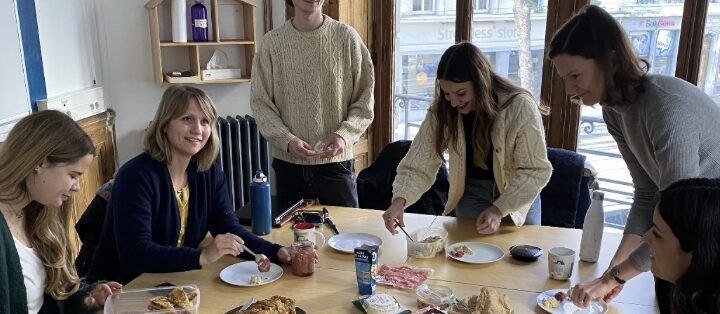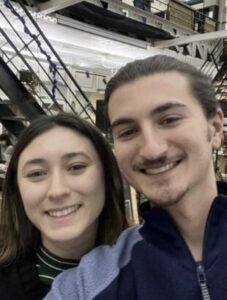
In this article, we talk about the collective annual review 😎
At Les Petites Cantines, the annual review is not individual but collective. Is it really possible to evaluate oneself individually in a purely collective context?
We explain how it works!
🕐 Reading time: 6 min
Summary
"The annual review is defined as a time to evaluate the employee's work and performance over the past year. It is the moment to review the commitments made by both parties; either at the time of hiring or during the previous annual review. It can be a privileged moment of exchange between the two parties to discuss all work-related subjects: atmosphere, behavior problems, etc. The annual review is also a guide for the coming year: objectives, expectations, requests. It is a non-mandatory but widely used tool because it is useful and practical in managing resources."
Culture RH, 2024
The most common form of the annual review is the individual annual review. However, some organizations/companies are beginning to see the limits of this practice (lack of objectivity, new expectations in the work relationship, lack of time for development between two reviews) and are turning towards collective evaluation methods.
The classic recipe is to combine the individual annual review (manager-employee) with what is often called a “360° feedback campaign” that allows gathering opinions from peers about the work done. The 360 campaign aims to enrich the exchanges of the individual annual review.
At Les Petites Cantines, the collective annual review is quite different from others…
The Collective Annual Review at Les Petites Cantines: How Does It Work?
🎯 The goal of this practice is to:
👉 Cultivate a company culture based on trust and feedback
👉 Foster a sense of belonging to the collective
👉 Avoid power abuses by putting everyone on an equal footing
👉 Value everyone’s voice
👉 Benefit from collective intelligence to improve
1️⃣ What form does it take?
2️⃣ What are the steps?
Beforehand: introspection – individual phase
Each member individually fills out a predefined grid to reflect meta-cognitively on their contribution to the world, their successes, failures, and objectives. In life in general, and at work.
On the day: sharing and feedback – collective phase
The process, timing, and setting are established (known to all) and reminded at the beginning of the day: confidential, benevolent, quality of listening.
The only unknown is the order of speaking. Members sit in a circle, and a person is randomly chosen to be the first to receive feedback. The person to their right is their scribe.
NB: this day always takes place outside of the workplace, in a cozy location. This year, one of the employees suggested the team meet… in her garden!
One month later: general debrief – collective phase
Three weeks/one month after the collective day, members meet for a debrief. A person is randomly chosen in advance to make the summary. This is the time to give cold feedback on the day’s proceedings and to turn the words into concrete evolutions for the future.
In addition to this practice and without the aim of evaluation, Bertrand, the general coordinator we met, has a meeting every two months with each collaborator to collect their feelings (regarding work pace and workload, team atmosphere, etc.).
3️⃣ The importance of the “manager’s” posture
The posture of the “manager”, of the hierarchically superior person, is fundamental.
At Les Petites Cantines, there is no manager. The organization tries to function as horizontally as possible, with positions and responsibilities differentiated other than by the traditional vertical hierarchy. Members have a role in serving a collective and an objective.
Bertrand is the general coordinator. This role can be likened to that of a CEO for traditional companies. The terminology greatly influences the perception of roles and the company culture. The posture to adopt to make this practice work:
NB: and indeed, it was Bertrand who proposed the collective annual review and its modalities… As it turns out, it is possible to propose management practices that limit one’s own power for the benefit of the organization. Food for thought…
The reactions of the collaborators! When we asked them what they thought, we did not expect this practice to be so emotionally intense.
They explained to us that this exercise is not simple, although they unanimously agree on its positive impact. To open up, prepare, give, and receive feedback requires a lot of emotional investment. In reality, we have never really learned how to give and receive feedback.
To implement this practice, or simply if you wish to create moments of collective feedback, it is important to properly support all members in preparing for the event, and to create/remind the framework of trust. And a plus, why not train in NVC*!
And finally, the most surprising, innovative, and inspiring… in this form of evaluation, there is never a one-on-one employer-employee confrontation 🙅♂️.

Authors: Vincent and Clémentine, The Managerial Odyssey 2024.
| Cookie | Duration | Description |
|---|---|---|
| cookielawinfo-checkbox-analytics | 11 months | This cookie is set by GDPR Cookie Consent plugin. The cookie is used to store the user consent for the cookies in the category "Analytics". |
| cookielawinfo-checkbox-functional | 11 months | The cookie is set by GDPR cookie consent to record the user consent for the cookies in the category "Functional". |
| cookielawinfo-checkbox-necessary | 11 months | This cookie is set by GDPR Cookie Consent plugin. The cookies is used to store the user consent for the cookies in the category "Necessary". |
| cookielawinfo-checkbox-others | 11 months | This cookie is set by GDPR Cookie Consent plugin. The cookie is used to store the user consent for the cookies in the category "Other. |
| cookielawinfo-checkbox-performance | 11 months | This cookie is set by GDPR Cookie Consent plugin. The cookie is used to store the user consent for the cookies in the category "Performance". |
| viewed_cookie_policy | 11 months | The cookie is set by the GDPR Cookie Consent plugin and is used to store whether or not user has consented to the use of cookies. It does not store any personal data. |